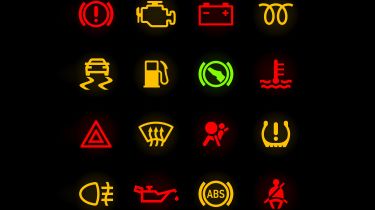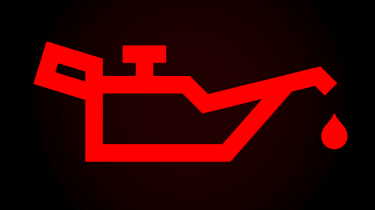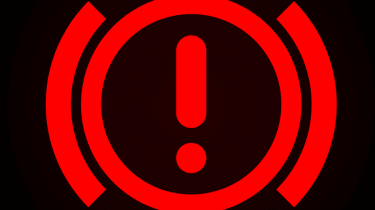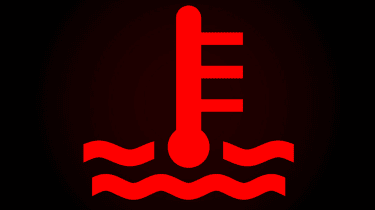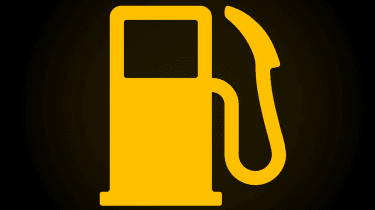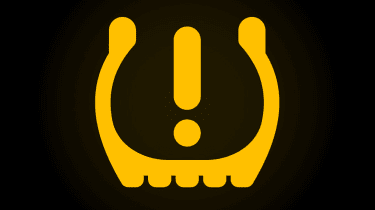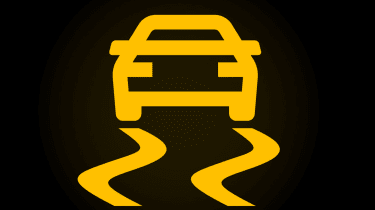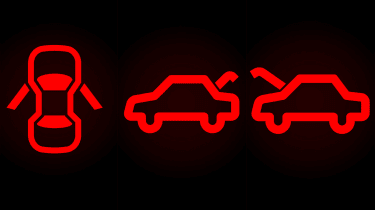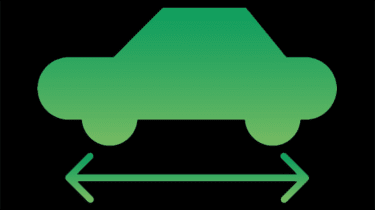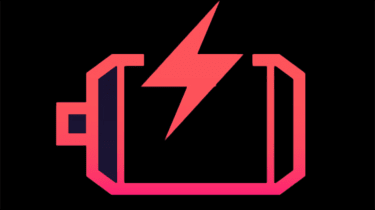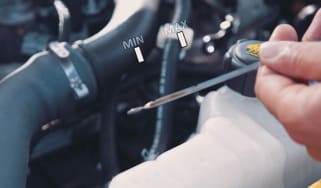Car dashboard warning lights: what does each symbol mean?
We cover the most common dashboard warning lights, what they mean, and what you should do if they illuminate
If there’s an issue with your car, there’s a good chance that a dashboard warning light will illuminate. Each warning light uses a unique symbol with a different meaning, providing a clue as to the specific issue with your car.
When a dashboard warning light pops up, it’s worth investigating the cause as soon as possible. It could be something as simple as an open door, but an engine management light or oil pressure warning light indicate much more serious trouble. In this guide, we’ll cover the most common dashboard warning lights and walk you through what to do if they illuminate.
Dashboard warning lights: general advice
Your car uses many dashboard warning symbols, so you’re not expected to remember what each and every one means. If one does illuminate and you need a quick way to determine the severity of the issue, you should check the colour of the warning light. Generally, warning lights are split into three groups:
- Blue and green – a system, such as the headlights, is turned on, and does not relate to a fault.
- Amber – there is an issue with the car and, while it may still be drivable, the problem should be investigated as soon as possible.
- Red – there is a serious issue that should be dealt with immediately.
A red warning light is the most serious – if one illuminates while driving, you should stop as soon as it’s safe to do so, turn the engine off, then check the car’s manual for advice. Only if it is safe to proceed should you continue with your journey.
You’ll notice that when you first turn on your car’s ignition, the dashboard will light up with lots of warning lights. Don’t panic – this is just your car testing that the system is functioning properly, and they should switch off once you’ve closed the door, fastened your seatbelt and turned on the engine.
Generally, car dashboard warning lights will be the same from model to model, meaning you should be able to recognise them no matter which brand of car you’re driving. Their location on or around the dashboard can vary, however, and we’d still recommend looking at your car’s handbook to double-check what they mean.
Read on to find out the meaning of the most common and important dashboard warning lights you might come across in your car.
Engine warning light
The engine warning light – sometimes called an engine management light (EML) – looks like the outline of an old-fashioned engine block. Our in-depth explainer covers the most common causes of an EML, but it relates to an issue with the engine itself. It will illuminate either amber or red depending on the make and model of car, as well as the severity of the issue.
Even if your car sounds and feels normal to drive, it is essential to investigate the issue, as driving with an engine problem could lead to serious – and expensive – damage.
There are many causes of an EML, from harmless sensor issues to complete engine failure. An engine warning light may also be accompanied by ‘limp mode’, reducing engine power to prevent further damage.
Oil pressure warning light
The oil pressure light, shaped like an oil can, will illuminate if there is a drop in oil pressure in the engine. Your engine needs oil pressure to work correctly, so this is a serious problem – the light will glow red for this reason.
If this light comes on, you should stop driving immediately and have the problem investigated. Without adequate oil pressure, the moving components in your car’s engine won’t be lubricated correctly and could start to break, potentially leading to complete engine failure.
An oil pressure warning light could be caused by something as simple as low engine oil, in which case you should top the engine oil level up to the recommended amount. However, there could be a more serious oil leak or oil pump issue at play that a service centre would need to investigate.
Brake system warning light
It goes without saying that your car’s brake system is vital for your safety, so this warning light should be investigated immediately. It looks like an exclamation mark within a circle and is triggered when the car detects an issue with the braking system. This could be as simple as a handbrake being left on, but if the light remains on once the handbrake has been released, there is a serious problem and the car should not be driven. If it illuminates while driving, pull over safely and call for roadside assistance or arrange for the car to be taken to a garage.
Potential causes of a brake system warning light include low level of brake fluid or a faulty pad wear sensor. However, it could also be a more serious issue with the braking system, and you shouldn’t risk driving any further. If the pedal feels spongy when you press it, or sinks all the way to the floor, then it’s easy to tell that a significant issue has occurred and the car should definitely not be driven.
Battery charge warning light
The battery warning light looks just like a car battery, with plus and minus symbols within a rectangle. It can indicate a number of things, all relating to the car’s battery and charging system.
The light will trigger if the car’s electrical systems are not receiving enough voltage, usually caused by a faulty battery, or sometimes an issue with the car’s alternator. The latter is a serious issue that will need to be resolved by a professional. If you’re not sure which issue is causing the light to illuminate, you can test the health of your battery yourself. Signs of a faulty battery include dim headlights, or if your engine is reluctant to start.
Temperature warning light
The temperature warning light, styled after a thermometer in water, signifies that the engine is overheating. If this light appears while driving, you should stop the car immediately – running hot for too long can lead to total engine failure.
This could be due to a low level of engine coolant, in which case you should stop driving, let the engine cool down, and top up the coolant to the correct level. You may be able to see coolant dripping onto the ground if the radiator is damaged and leaking – this will need to be repaired by a professional. If the coolant level looks fine but the car is still overheating, there could be an issue with the water pump, which will also need expert attention.
Some cars may use a blue temperature warning light as well. This light means that your engine is cold, so it should only appear when you start your car after it has been sitting for a while. The blue light isn’t one to worry about, but it’s advisable not to push your engine too hard until it has disappeared.
Low-fuel warning light
Most drivers are familiar with the low fuel warning light. As the name suggests, it illuminates if you’re running low on fuel and looks like a fuel pump. The trigger point for this light is different for practically every make and model of car, but in any case, it’s designed to give enough warning so you can find a fuel station – you’ll usually have around 50 miles of range left.
Running out of petrol won’t cause any mechanical damage, but stopping on the road due to running dry is an offence. If you run out of diesel, it’ll be necessary to bleed the air from the fuel lines and injectors before the engine will start properly. That means there’s more to do than simply top up from a jerry can.
If you’re using more fuel than you’d expect, it could mean that you have a fuel leak (check the ground under your car; especially your driveway or parking space), or your car’s on-board computer (ECU) is telling the engine to use more fuel than it needs. A garage will be able to check this for you.
Tyre-pressure sensor warning
Since 2014, it has been mandatory for manufacturers to fit tyre-pressure monitoring systems (TPMS) to their new cars in the EU. This system monitors the amount of air in the tyres and can detect a drop in pressure. If it does detect a drop, it will let the driver know by illuminating the tyre-pressure sensor warning light – symbolised as an exclamation mark within a flat tyre.
This is important, because low tyre pressures can adversely affect braking and cornering, and a sudden drop in pressure can cause a dangerous blow-out at high speed. If the TPMS system alerts you to low pressure, you’ll need to check and inflate the tyre. If it has an obvious puncture, you’ll have to change the wheel or use a puncture repair kit.
Traction-control warning light
You’ll most commonly see your car’s traction-control warning light when the wheels lose grip, usually in the rain or snow. It gives a visual indication that you’re close to the limit of grip. If it’s on constantly, it usually means it’s deactivated – either by a fault or by you switching the system off. If it’s the former, you’ll need to get the system checked, if it’s the latter, we recommend that you switch the system back on – check your car’s manual to find out how to do so.
Glow plug warning light (diesels only)
The glow plug warning light is exclusive to diesel cars and looks like a coil of wire. It will almost always illuminate before starting the car, a normal procedure as the glow plugs warm up the engine’s combustion chambers. If it illuminates while driving, it could indicate that something’s wrong with the plugs themselves or the systems and computers that control them.
You may not notice anything wrong at first, but issues with glow plugs can cause combustion to occur slightly too early or too late (known as ‘knocking’). This likely won’t cause any damage to the engine, but it will make your engine sound a bit rough and not run as smoothly or efficiently as it should, resulting in a drop in fuel economy. You should take your car to a garage to investigate the issue.
Seatbelt warning light
These days, the vast majority of new cars come with a system to let you know if any of your passengers haven’t got their seatbelts fastened. There’ll usually be a light – as above – to tell you if this is the case.
Cars use pressure sensors in the seats and sensors in the seatbelts – so if there’s a certain amount of weight on a seat and the seatbelt isn’t secured, it’ll let you know. These warnings may be accompanied by an unusual noise, too. If the light remains on with no passengers or luggage on the seats, then a faulty sensor or seatbelt buckle is probably the culprit.
Door/boot/bonnet warning lights
Like the seatbelt light, these lights don’t usually mean that there’s anything physically wrong with the car (unless the sensor that sends the signal to the light is itself faulty). Instead, they tell you that one of the openings – be it a door, boot or bonnet – is open.
This is often obvious if, for example, you’re putting the weekly shop into the boot or securing your children in the back seats. But these lights also tell you if a door, boot or bonnet hasn’t been shut properly and is only loosely closed, so they can be very useful.
Hybrid and electric vehicle warning lights
Hybrid and electric cars feature some systems and technologies that aren’t found in traditional petrol and diesel cars. As a result, there are new dashboard warning lights that you may not have come across before. The following examples appear exclusively in hybrid and electric vehicles.
Ready to drive warning light
Unlike a standard petrol or diesel, a hybrid or electric vehicle will be virtually silent when starting up. To avoid any confusion, this light simply informs you that your car is ready to be driven, so there is no cause for concern.
Limited power warning light
This warning light is shaped like a tortoise. It may look friendly, but it actually means that your vehicle is running on limited power. There are a number of faults that could be causing this lack of power and they vary in severity, but it can also indicate a very low charge in the battery, and is limiting your power to help you get to a safe place before energy runs out completely. It’s best to stop the car in a safe place and arrange for it to be taken to the garage for a diagnosis.
Battery charge level warning light
This light will appear in your hybrid or electric car if the battery is at a critically low level of charge. If you do not stop the vehicle soon, you could end up stranded. The best, and most obvious, course of action is to seek the nearest available charging point, whether this is at home or a public facility.
This warning light is different to the battery warning light mentioned earlier, found in petrol and diesel cars.
Pedestrian alert system
This symbol looks like a loudspeaker next to a car. Because electric and hybrid vehicles can be so quiet, especially at low speeds, it can be difficult for pedestrians to hear them approaching. In order to prevent any accidents, these vehicles are usually fitted with a system that emits a sound to alert pedestrians to your presence, without the aggression of using the horn. If this light stays illuminated, regardless of your speed, then there is a fault with this system. This will require a dealer visit in order to determine the problem.
Drive a diesel car? You’ll want to read our guide to AdBlue…
Recommended

Car tax: VED rates and increases explained 2024/25
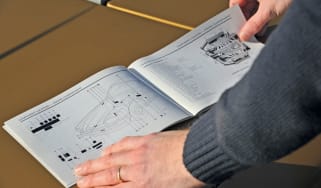
Car service history: why it’s important and how to check for one
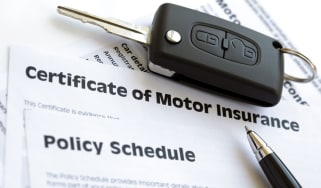
What are Vehicle Risk Ratings? UK's new car insurance groups explained
Most Popular

New Hyundai Ioniq 9: huge SUV unveiled as electric flagship

New Jaguar GT teased: upcoming EV looks like no Jag that’s come before

What is regenerative braking? Pros, cons and how it works
Tips & advice

Car dashboard warning lights: what does each symbol mean?

Electric car charging stations: public networks, charger types, apps and maps

